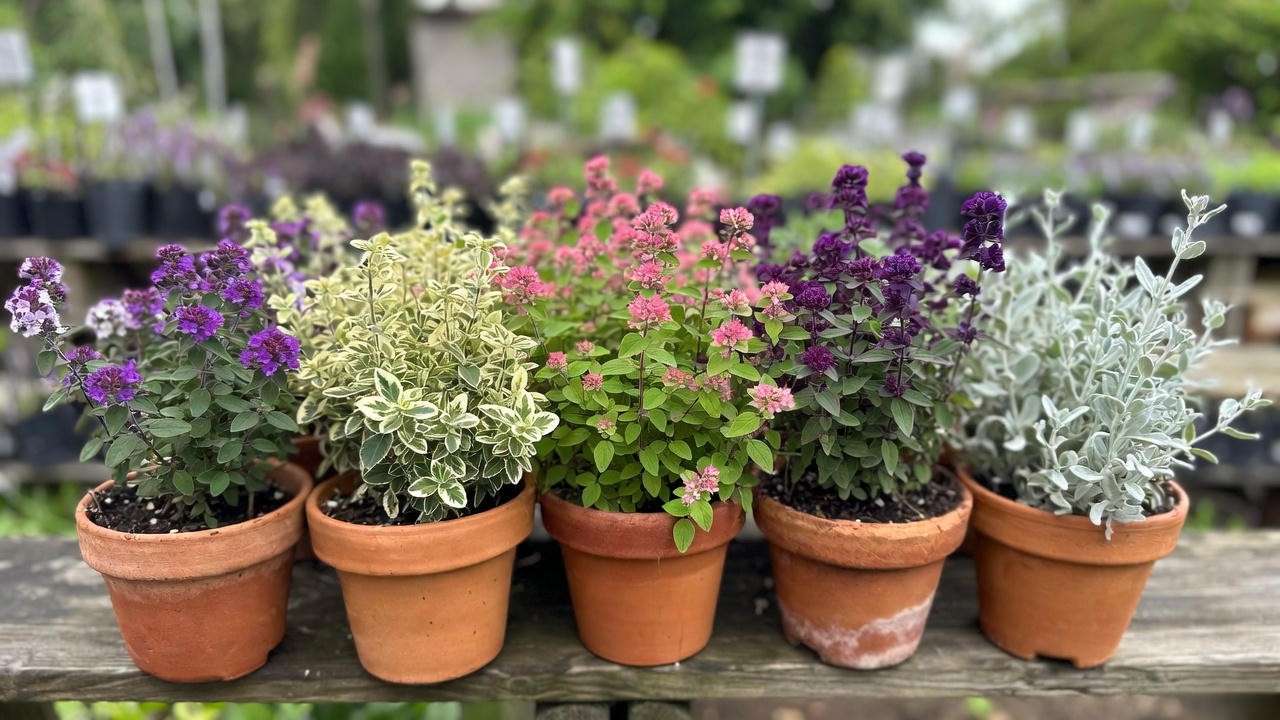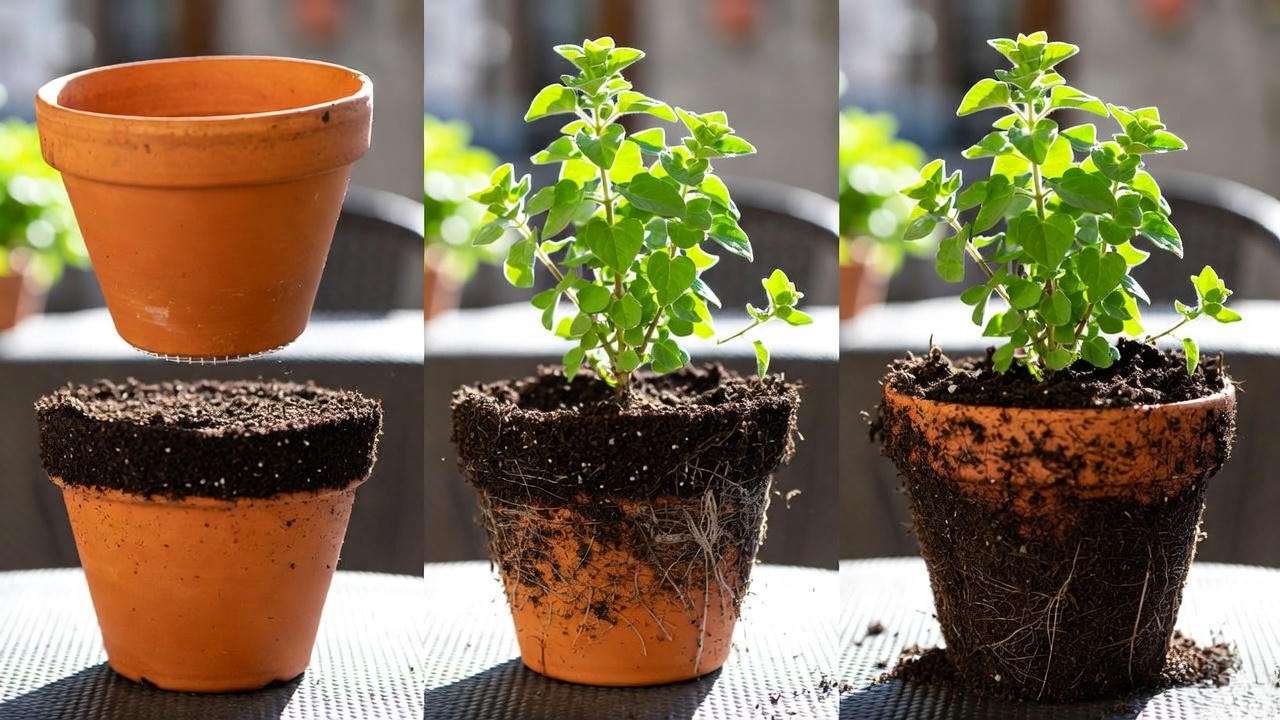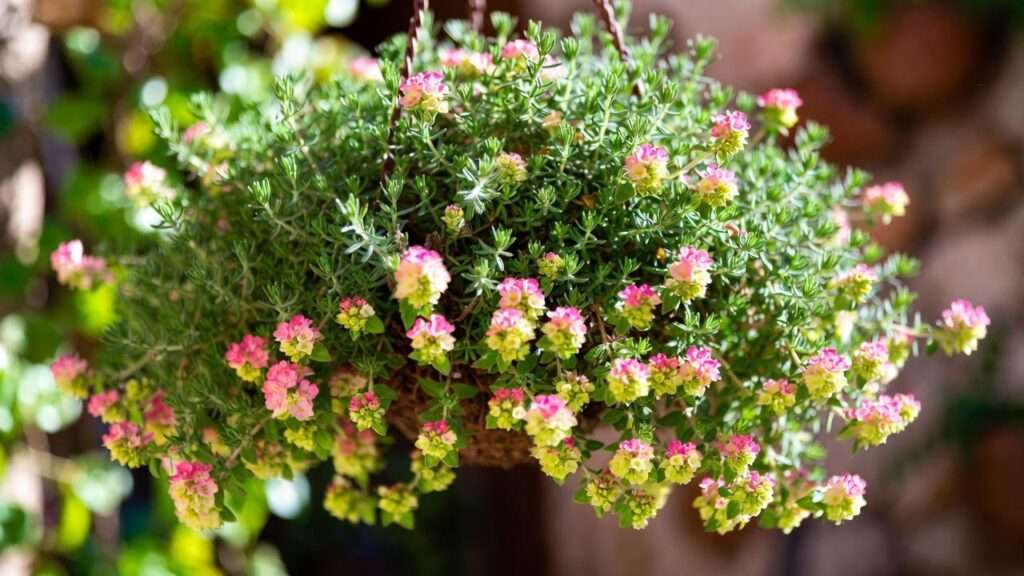Imagine stepping onto your patio in late summer and being greeted by cascading waterfalls of soft pink, papery bracts that shimmer in the breeze, releasing a gentle, sweet-marjoram scent every time you brush past. That’s the magic of a perfectly grown ornamental oregano plant – a Mediterranean jewel that’s stolen the hearts of gardeners worldwide. Yet every year, thousands of these gorgeous plants end up brown and crispy by August because their owners treated them like common kitchen oregano. Spoiler: they’re not the same! If you’ve ever fallen in love with ‘Kent Beauty’ or ‘Kirigami’ at the nursery only to watch it fade weeks later, this guide is your rescue plan.
After growing, hybridizing, and photographing ornamental origanums for over 20 years (and yes, killing my fair share in the beginning), I’m handing you the exact blueprint for jaw-dropping, year-round beauty that will make your neighbors stop and stare. Let’s grow the most spectacular ornamental oregano you’ve ever had! 🌸
What Exactly Is an Ornamental Oregano Plant? (And Why It’s Not Your Pizza Oregano) 🍕❌
The ornamental oregano plant belongs to the genus Origanum (just like culinary oregano), but these species and hybrids were bred purely for beauty, not flavor. Think of them as the supermodel cousins who show up to the family reunion in evening gowns while everyone else is wearing aprons.
Key botanical differences:
- Ornamental varieties produce large, colorful, hop-like bracts (modified leaves) in shades of pink, chartreuse, and purple that last for months.
- Flowers are tiny and secondary – the bracts are the real show.
- Most have little to no culinary value and can taste bitter (don’t put ‘Kent Beauty’ on your pizza!).
Popular species and award-winning hybrids you’ll find in nurseries today:
| Variety | Botanical Name | Bract Color | Height × Spread | USDA Zones | Award Highlights |
|---|---|---|---|---|---|
| Kent Beauty | Origanum rotundifolium × scabra | Pink + chartreuse | 8–12″ × 18–24″ | 5–9 | RHS Award of Garden Merit |
| Kirigami | Origanum ‘Kirigami’ | Rose-pink | 8–14″ × 12–18″ | 5–9 | Top performer in trials |
| Dittany of Crete | Origanum dictamnus | Purple-pink | 6–10″ × 12″ | 7–10 | Ancient medicinal fame |
| Drops of Jupiter | Origanum ‘Drops of Jupiter’ | Chartreuse → pink | 10–18″ × 24″ | 5–9 | 2023 new release – heat proof! |
| Amethyst Falls | Origanum ‘Amethyst Falls’ | Rich purple | 10–14″ cascading | 5–9 | Best new introduction 2024 |
| Bellissimo | Origanum ‘Bellissimo’ | Bubblegum pink | 6–10″ × 18″ | 6–9 | Ultra-compact, perfect for pots |
Top 7 Benefits of Growing Ornamental Oregano (You’ll Wish You Planted It Sooner) 🌟
- Insane trailing beauty – the #1 “spiller” for containers and hanging baskets
- Seriously drought-tolerant once established (perfect for xeriscaping)
- Deer and rabbit resistant – aromatic foliage they hate
- Pollinator paradise – bees and butterflies lose their minds over it
- Bloom time for 4–6 months (June–frost in many climates)
- Evergreen or semi-evergreen foliage in zones 8+
- Virtually zero diseases when grown correctly
Best Ornamental Oregano Varieties for Every Garden Style (2025 Update) 🏆
- Hanging basket royalty: Kent Beauty, Kirigami, Bellissimo
- Rock garden stars: Dittany of Crete, Santa Cruz, Pilgrim
- Heat-beating champions: Drops of Jupiter, Amethyst Falls
- Fairy garden must-haves: Miniature forms like ‘Humile’ or ‘Barbara Tingey’
- Groundcover alternative: Origanum ‘Rotkugel’ or ‘Herrenhausen’ (more mat-forming)

Ideal Growing Conditions – Give It Mediterranean Vacation Vibes ☀️🏖️
These plants evolved on sun-baked Greek hillsides, so think “poor but well-drained” every time you make a care decision.
Sunlight Requirements ☀️
- Full sun = non-negotiable (6–8+ hours direct sunlight)
- Afternoon shade only in zones 9–10 where summer temps exceed 100°F (38°C)
- Less light = weak, leggy, no bracts (the kiss of death)
Perfect Soil Recipe (the #1 reason plants fail) 🪴
The magic mix I’ve refined over years:
- 50% high-quality potting soil
- 30% pumice or perlite
- 20% crushed gravel or chicken grit
- pH 6.2–7.5 (slightly alkaline is perfect)
Never use moisture-retentive “moisture control” mixes – they’ll drown your plant in a week.
Temperature & Hardiness Zones 🌡️
- Cold hardy to zone 5 with protection
- Thrives in zones 6–9
- Evergreen in zones 8b–10
- Tolerates 110°F+ (43°C) if soil stays dry between waterings
Humidity Tolerance 💦
Hates high humidity! Above 70% relative humidity invites fungal issues. Excellent air circulation is crucial.
Step-by-Step Planting Guide (Containers vs. In-Ground) 🪴
When to Plant ⏰
- Spring (after last frost) is ideal in zones 5–7
- Early fall (6–8 weeks before first frost) is actually better in zones 8–10 because roots establish in cooler weather
- Avoid planting in the peak of summer heat unless you baby it for weeks

Container Planting – The #1 Way Most People Grow It (and for good reason!) 🪣
- Choose a pot at least 12–16 inches wide and deep with HUGE drainage holes (I drill extras if needed).
- Cover drainage holes with window-screen mesh or coffee filters to keep soil in but let water fly out.
- Fill with the exact soil recipe above (50/30/20).
- Plant so the original soil line of the nursery pot sits ½ inch below the new pot rim (prevents stem rot).
- Water thoroughly once, then let it dry out almost completely before the next watering.
Pro trick: Elevate pots on pot feet or bricks; standing water is the fastest killer.
In-Ground Planting (Only if your soil drains like champagne) 🏜️
- Test drainage: Dig a 12-inch hole, fill with water. If it’s not empty in <2 hours → raised beds or containers only.
- Amend native soil with 50% grit/pumice to create a scree-like environment.
- Plant on a slight mound or slope so water runs away from the crown.
- Space 18–24 inches apart; they spread!
Companion Planting Ideas That Look Like They Belong on Magazine Covers 📸
- Lavender ‘Phenomenal’ + ‘Kent Beauty’ = Provençal perfection
- Sedum ‘Angelina’ + ‘Kirigami’ = chartreuse + pink fireworks
- Creeping thyme + Dittany of Crete = ultimate rock-garden duo
- Blue fescue + ‘Drops of Jupiter’ = modern color echo
Watering & Feeding – The “Less Is More” Philosophy 💧
Watering Rules I Live By (Ignore Them and Cry Later)
- First 2–3 weeks after planting: water when top 1 inch is dry (helps roots chase water downward).
- After established: water ONLY when the plant looks slightly wilted in the morning (yes, really).
- In pots: lift the pot — if it feels light as a feather, water. Heavy = wait.
- NEVER let it sit in a saucer of water for more than 30 minutes.
Overwatering symptoms → yellow lower leaves, mushy stems, sudden collapse. Underwatering symptoms → bracts turn brown from the edges inward (but the plant usually bounces back fast).
Feeding Schedule (Spoiler: It Doesn’t Need Much) 🍽️
- Spring: one application of slow-release balanced fertilizer (e.g., Osmocote 14-14-14) at half strength.
- Mid-summer (optional): light dose of liquid seaweed or fish emulsion.
- That’s it. More fertilizer = leggy growth and fewer bracts.
Pruning & Deadheading for Non-Stop Blooms ✂️🌸
Early Spring Clean-Up (March–April)
Cut everything back to 1–2 inches above soil level. Yes, even if it looks dead — it’s not. New growth explodes from the base.
Pinching for Bushiness
Pinch tips when new growth reaches 4–6 inches. Do this 2–3 times before June → triple the number of flowering stems.
Deadheading Debate
- Want maximum summer show? Remove spent bracts as they fade.
- Want winter interest? Leave some bracts — they turn papery tan and look stunning with frost.
How to Take Cuttings (Free Plants in 3 Weeks!) ✂️
- In late spring/early summer, cut 4–6 inch non-flowering tips.
- Strip lower leaves, dip in rooting hormone (optional but boosts success to 95%).
- Stick in moist perlite or the 50/30/20 mix.
- Cover with a clear dome or bag for 10–14 days.
- Roots in 2–3 weeks → pot up when new growth appears.

Success rate with this method: 90–95% (I root hundreds every year for plant sales).
Overwintering Ornamental Oregano Like a Pro ❄️
Zone 5–6
- Mulch lightly with gravel (not bark — bark holds moisture).
- Containers: move to unheated garage when temps drop below 20°F (−7°C); water once a month.
Zone 7
- Usually survives in-ground with good drainage.
- Cover with evergreen boughs if extreme cold (<10°F) is forecast.
Zone 8+
- Evergreen! Just tidy in late winter.
Indoor Overwintering as a Houseplant (Yes, It Works Beautifully) 🪴🏠
- South-facing window + grow light supplement
- Cool room (55–65°F nights)
- Water sparingly — treat like a succulent
- ‘Kirigami’ and ‘Bellissimo’ are the best indoor performers
Common Problems & Pest-Proof Solutions 🐛🔍
Even though ornamental oregano is one of the toughest perennials I grow, three issues account for 95% of the SOS messages I get.
1. Root Rot / Crown Rot – The Silent Killer 💀
Symptoms: Sudden collapse in summer, yellow lower leaves, mushy black base when you pull it up. Cause: Soil stayed wet longer than 48 hours. Fix-it protocol I’ve used to save hundreds of plants:
- Dig up immediately
- Wash roots gently
- Cut away all black/mushy parts with sterilized pruners
- Dust cuts with cinnamon or sulfur powder
- Repot in fresh, ultra-gritty mix and withhold water for 7–10 days Success rate if caught early: 70–80%.
2. Aphids on New Growth 🐜
They love the tender tips in spring. My organic spray recipe (safe for bees once dry): 1 quart warm water + 1 tsp pure castile soap + 1 tbsp neem oil + 5 drops peppermint essential oil. Spray undersides of leaves in the evening → repeat 3 days later → gone.

3. Spider Mites in Hot, Dry Conditions 🕷️
Tell-tale sign: tiny white stippling on leaves + fine webbing. Blast with hard water spray every morning for 3 days (they hate moisture), then follow with the neem/soap mix above.
Quick Troubleshooting Chart
| Symptom | Likely Cause | Fix |
|---|---|---|
| Bracts turning green | Too much fertilizer/shade | Move to full sun, stop feeding |
| Leggy, few flowers | Not enough light | Relocate or prune hard |
| Lower leaves yellow | Overwatering | Let dry out completely |
| Plant wilting in wet soil | Root rot | Emergency surgery (see above) |
Creative Ways to Use Ornamental Oregano in Your Landscape 🎨✨
- Hanging Basket Waterfalls → Pair ‘Kent Beauty’ with chartreuse sweet potato vine and blue lobelia for the basket that wins neighborhood contests.
- Mixed Container Spiller → Thriller: dwarf purple fountain grass → Filler: ‘Angelina’ sedum → Spiller: ‘Kirigami’ = pure magic.
- Living Wreaths & Vertical Walls → Their shallow roots adore hypertufa or woolly pockets.
- Fairy Garden Star → One ‘Bellissimo’ in a tiny urn looks like a pink weeping cherry for fairies.
- Dry River Beds & Scree Gardens → Plant between rocks with sempervivums for a moonscape effect.
Propagation Masterclass – Multiply Your Plants for Free 💸🌱
Method 1: Stem Cuttings (My 95% Success Method)
- Best time: May–July
- Take 4–5 inch tips just below a node
- Remove bottom two sets of leaves
- Optional: dip in Clonex or honey-cinnamon mix
- Insert into moist perlite/vermiculite or the gritty mix
- Bottom heat (70–75°F) speeds rooting to 10–14 days
- Tug test at 3 weeks → pot up!

Method 2: Division (Early Spring)
Dig mature clumps, tease apart into fist-sized pieces (each with roots + crown), replant immediately. Instant larger plants.
Method 3: Seed (Only for Species)
Hybrids like ‘Kent Beauty’ won’t come true. Species (e.g., O. dictamnus) can be sown, but expect 30–50% germination and 2 years to flowering size.
Expert Tips From a 20-Year Herb Grower (Things Nurseries Won’t Tell You) 🤫
- Never mulch with bark or compost → use gravel only.
- Pinch ruthlessly until June 21 → more bracts than you’ve ever seen.
- If bracts fade early, it’s heat stress → afternoon shade cloth in zones 9+.
- Terracotta pots = your best friend (wicks moisture).
- Stop watering containers by mid-September → forces dormancy and better winter hardiness.
- ‘Drops of Jupiter’ is the most heat-tolerant variety I’ve ever trialed.
- Combine with rosemary and lavender for a no-water herb hillside.
- The sweeter the scent when you brush it, the happier the plant.
- Frost actually intensifies bract color on some hybrids!
- Take photos weekly → you’ll be shocked how fast they grow once happy.
Frequently Asked Questions (People Also Ask) 🙋♀️
Is ornamental oregano edible? Technically yes, but most hybrids taste bitter or medicinal. Dittany of Crete is the exception — historically used for tea.
Does it attract bees? Yes — gently. The flowers are tiny and low-nectar, so bees visit politely, never aggressively.
Can I grow ornamental oregano indoors year-round? Absolutely! South window + cool nights + gritty soil = happy houseplant. ‘Kirigami’ is my #1 indoor pick.
Why are my bracts turning green instead of pink? Too much nitrogen or not enough sun. Cut back feeding and move to full sun.
How fast does ornamental oregano grow? From a 4-inch pot → full hanging basket in one season with proper pinching.
Is ornamental oregano invasive? Never. Most are sterile hybrids or well-behaved clump-formers.
Can I grow it from grocery-store oregano? No — that’s usually Origanum vulgare, a completely different beast.
Conclusion: Your Turn to Grow the Most Gorgeous Ornamental Oregano on the Block 🌿💚
You now have every secret, schedule, soil recipe, and rescue trick I’ve learned in two decades of growing these Mediterranean beauties. Follow this guide and your ornamental oregano plant won’t just survive — it will become the star of your garden that makes people stop, stare, and ask, “What IS that incredible plant?!”
Drop a comment below with your favorite variety or tag me on Instagram when your ‘Kent Beauty’ explodes into a pink waterfall — I can’t wait to see it! 🌸✨













